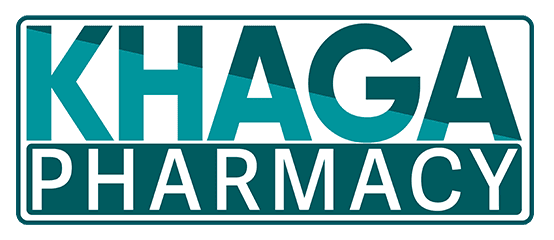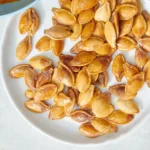Are you curious about the nutritional value of Crocs? While Crocs have gained popularity for their comfort and durability, there’s a humorous myth online about their potential as food. In this article, we explore the reality behind Crocs nutritional value and why these iconic shoes should stay on your feet, not in your diet.
Introduction to Crocs Nutritional Value:
The topic of Crocs’ nutritional value is unconventional yet strangely popular, largely due to the internet’s humorous fascination with this footwear brand. While at first, it may seem like a harmless joke, it raises some intriguing questions. Why do people wonder if Crocs could have nutritional value, and what misconceptions exist about this foam footwear?
Crocs, primarily made from a closed-cell resin material called Croslite, are far from edible. Croslite is a proprietary foam technology that gives Crocs their distinct lightweight, cushioned feel, but it lacks any nutritional or food-based qualities. Still, the unique cultural relevance of Crocs and the popularity of online humor have sparked curious inquiries about their potential as “edible footwear.” This article provides a thorough look into the materials and purpose of Crocs, the origins of the nutritional myth, and the health risks associated with non-food consumption.
What is Crocs Nutritional Value:
Crocs, the iconic foam clogs, are known worldwide for their comfort, versatility, and distinctive design. Despite their popularity, the idea of Crocs as a food source is purely a joke, stemming from internet humor. Crocs are not edible, contain no nutrients, and should never be consumed. Their foam construction, known as Croslite, is meant solely for footwear and contains no food-safe ingredients. Let’s dive deeper to understand why this popular footwear has no place in the kitchen.
No, Crocs contain no nutrients and are not meant for consumption.
- Advertisement -
What Are Crocs Made Of:
Crocs are crafted from Croslite, a synthetic foam material designed for comfort, support, and durability. Unlike rubber or traditional plastic, Croslite is a closed-cell resin that gives Crocs their lightweight structure and cushioning. The material is specifically engineered for footwear, providing benefits such as shock absorption, flexibility, and resistance to water and bacteria.
The Role of Croslite in Footwear Design:
Croslite foam has revolutionized comfort in footwear by molding to the shape of the foot, offering orthotic support, and minimizing strain. As a non-marking material, it resists scuffs and scratches, making it ideal for environments where shoes encounter varied surfaces. The structure of Croslite also offers antimicrobial properties, which prevent odor and bacterial buildup, making Crocs a practical choice for healthcare, culinary, and recreational use.
However, Croslite is far from a consumable material. Its closed-cell design is not only waterproof but also non-biodegradable, meaning it does not break down in natural environments or within the human body. This property alone indicates its incompatibility with the digestive system, as the human body cannot metabolize or extract nutrients from such synthetic materials.

Heated Insole Shoes
How Do Heated Insole Shoes Work:
Heated insole shoes work by utilizing small, flexible heating pads embedded within the insoles. These pads are typically powered by a small, rechargeable battery pack that fits easily into the shoe or boot. The battery delivers electricity to the heating elements, which in turn generate heat to keep your feet warm. Most heated insoles have temperature control systems, allowing you to adjust the heat levels to suit your needs.
When you turn on the heated insoles, the heat is evenly distributed across the foot, helping to maintain optimal warmth even when exposed to extreme cold. This feature is especially beneficial for those who experience discomfort in their feet due to poor circulation or other cold-related conditions. The design of the insoles ensures that the heat is not concentrated in one area, preventing overheating and ensuring a comfortable experience.
The Origins of the Crocs Nutritional Value Meme:
The idea that Crocs might have nutritional value or be edible largely emerged from internet memes and lighthearted commentary about the brand’s durability. Some fans jokingly claim Crocs are “so versatile you could eat them,” a statement meant to highlight their usefulness and resilience rather than their edibility.
As with many internet trends, the humorous take on Crocs’ utility went viral, leading to widespread curiosity about the materials that make up these iconic shoes. Over time, this humorous outlook has led some people to genuinely wonder if Crocs hold any nutritional content. Yet, Croslite™ remains strictly a footwear material with no food-safe applications.
Why Croslite Foam Is Not Food-Safe:
Croslite™ foam is a synthetic, closed-cell resin made solely for footwear, with no food-grade properties or nutritional benefits. It lacks digestible components and cannot break down within the digestive system. Unlike edible materials or food-safe plastics, Croslite contains polymers and other compounds that make it resistant to environmental degradation. When ingested, these non-biodegradable compounds may remain in the digestive tract indefinitely, posing serious health risks.
What Food-Safe Materials Look Like and Why Croslite™ Isn’t One of Them:
Food-safe materials, such as food-grade plastics, silicone, or certain metals, are regulated and specifically designed to ensure they’re non-toxic, non-reactive, and suitable for direct contact with food. These materials undergo rigorous testing to prevent any leaching of harmful chemicals and to ensure safety if accidentally ingested in small amounts.
Croslite, however, is not subject to these food-grade standards. It contains compounds that, if ingested, could lead to toxicity or physical harm. Unlike edible materials, Croslite™ has no digestible components, and because it is non-biodegradable, the body cannot break it down to extract nutrients.
Health Risks of Consuming Non-Food Items Like Crocs:
Ingesting non-food items is not only ill-advised but can be dangerous. Eating Crocs, or any other synthetic material, could result in digestive blockages, chemical toxicity, and serious physical complications. This behavior falls under a condition known as pica, a psychological disorder where individuals consume non-food substances. Pica can result in physical harm, as the digestive system is not equipped to process these materials.
The Potential Health Hazards of Consuming Crocs:
- Digestive Blockages: Croslite foam does not break down or pass easily through the digestive system, which can lead to physical blockages. If left untreated, such blockages may require surgical intervention to remove.
- Chemical Toxicity: While Croslite is safe for prolonged skin contact, its composition includes synthetic chemicals that may be harmful if ingested. These chemicals, when exposed to digestive enzymes, may release compounds that could cause toxicity or adverse reactions.
- Intestinal Trauma: The durability and rigidity of Croslite mean that, if ingested, it could physically damage the lining of the digestive tract, causing pain, irritation, or even infection. The risk of intestinal trauma adds to the list of reasons Crocs should never be consumed.
The Pica Disorder and the Dangers of Eating Non-Food Materials:
Pica is a psychological condition where individuals have an urge to consume items that aren’t food, such as chalk, paper, or in extreme cases, items like Crocs. While this disorder often has psychological roots, it can also stem from nutritional deficiencies, stress, or developmental conditions. Though rare, the consumption of non-food items like footwear presents risks, as these materials are not intended for ingestion and pose potential health hazards.
Those with pica may experience a heightened desire to ingest items that provide sensory or tactile satisfaction. However, treatment for pica often involves therapy, nutritional adjustments, and behavioral counseling to reduce the desire to eat non-food substances and to address any underlying mental health or nutritional needs.

Why Crocs Should Only Be Used as Footwear:
Crocs were designed with specific purposes in mind: comfort, durability, and versatility in a variety of environments. The footwear was created to provide relief for individuals who stand for long periods, such as healthcare workers, chefs, and hospitality employees. Its non-slip properties, combined with Croslite’s unique comfort, make it suitable for these demanding environments. However, no component of Crocs was ever intended to serve as food.
The use of Croslite exclusively for footwear purposes is grounded in its unique properties, from moisture resistance to anti-microbial protection. No matter the cultural hype or humorous internet trends, Crocs should remain exclusively on the feet, where they can fulfill their purpose effectively.
The Cultural Impact of Crocs and Their Meme Status:
In recent years, Crocs have transcended their original purpose, becoming a cultural phenomenon that resonates with people of all ages. Initially seen as utilitarian and perhaps a bit unfashionable, Crocs are now considered a pop culture icon, embraced by celebrities, fashion designers, and everyday users alike. This popularity has contributed to the lighthearted myths about Crocs, including the humorous speculation about their edibility.
The internet’s fascination with “edible Crocs” stems from their distinct design and the brand’s adaptability. From memes to DIY projects, Crocs have solidified their place as a unique brand with a universal appeal. Despite the jokes, it’s important to remember that Crocs are only meant for comfort and style, not for consumption.
Food Alternatives That Are Safe and Edible:
While Crocs hold no nutritional value, there are many edible alternatives that provide both texture and nutritional benefits. Here are some fun, edible substitutes that people enjoy for their texture or playful quality:
- Edible Seaweed: Known for its chewy texture, seaweed offers a savory flavor profile along with fiber, vitamins, and minerals. It’s a popular alternative for those seeking a unique snack that is also nutritious.
- Gelatin-Based Snacks: Gelatin candies, like gummy bears, offer a chewy consistency that is satisfying and safe to eat. Unlike Croslite™, these snacks are specifically designed to be edible.
- Marzipan and Fondant: These confectionery materials are used for decorating cakes and have a similar pliable texture to foam but are completely safe to eat.
FAQ
Most frequent questions and answers
No, Crocs contain no nutrients and are not meant for consumption.
Crocs are made of Croslite™, a synthetic foam that’s comfortable but not edible.
Yes, ingesting Crocs can lead to digestive issues and other health risks.
Conclusion:
In conclusion, Crocs have no nutritional value, nor are they safe or suitable for consumption. The humor surrounding Crocs as an “edible” item is purely a meme, a humorous cultural phenomenon that has no basis in fact. Croslite™ foam, the material that makes Crocs so comfortable and durable, is not food-grade and lacks any of the qualities found in edible materials. Consuming Crocs or any other non-food item can pose serious health risks, from digestive complications to chemical exposure. Instead, enjoy Crocs for what they are a reliable, comfortable, and iconic choice in footwear.








